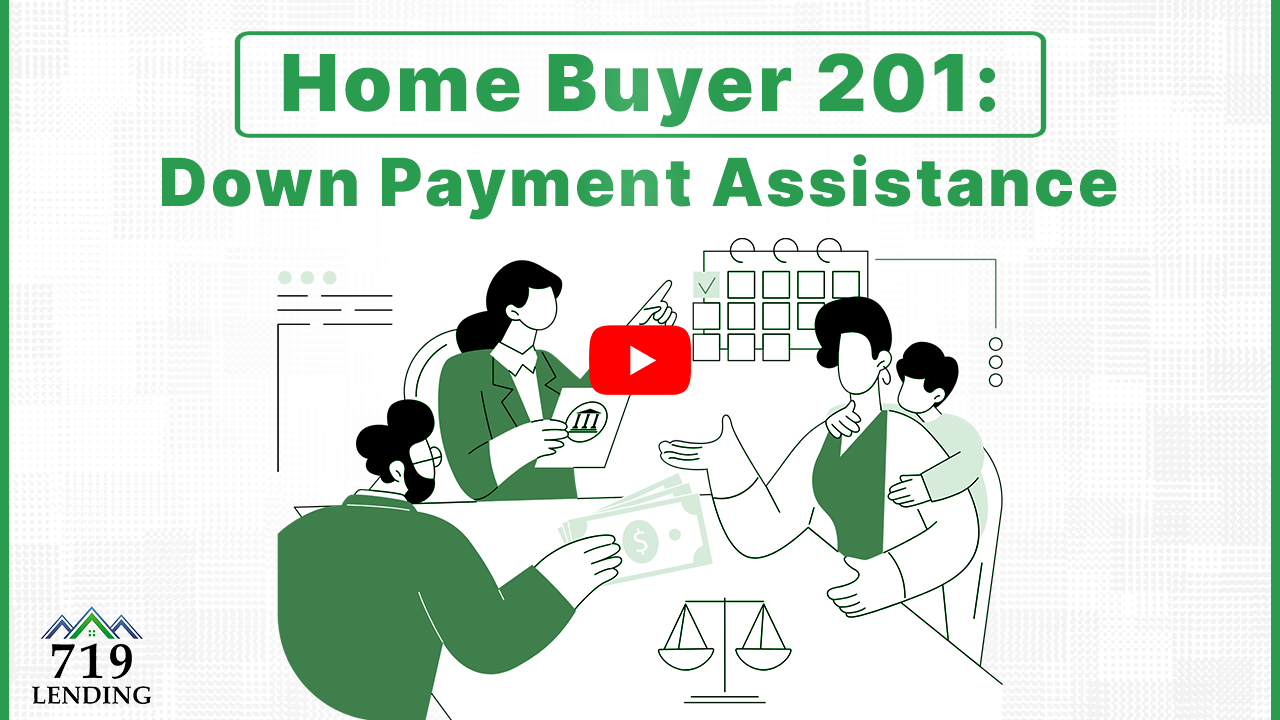6 minute lesson Lesson Summary Importance of timely document submission for your loan Types of…
Homebuyer 201: Lender Overlays
Lesson Summary
-
When buying a house, there are many rules to consider, such as employment, credit score, debt to income ratio, and down payment.
-
Fannie Mae and Freddie Mac create rules to mitigate risk and ensure loan performance.
-
Lenders can add additional rules on top of the standard requirements, known as lender overlays.
-
Lender overlays can vary between lenders and may include credit score limitations.
-
VA loans have no credit score requirement, but individual lenders may have their own overlays.
-
It is important to ask your loan officer about any overlays that may be affecting your qualification.
-
Mortgage brokers can shop different banks to find one that can accommodate your unique situation.
-
Working with a mortgage broker can save time and potentially help you become a homeowner when traditional lenders may not approve you.
-
Lender overlays apply to all customers within a particular bank.
Navigating the homebuying process unveils a plethora of regulations – rules that seem infinite. How much do they affect your journey to homeownership?
Complex, yet crucial.
These guidelines aren’t mere formalities; they’re the backbone ensuring loans are viable. Delve into these safeguards – the bedrock of responsible lending.
Understanding Lender Overlays
Imagine you’re deciphering a code where each lender has its own cipher – these are lender overlays. While agencies like Fannie Mae and Freddie Mac set the base lending criteria, individual lenders may impose additional conditions, crafting their own unique lending blueprint. These stipulations, often more stringent than the foundational requirements, are designed to mitigate risk according to the lender’s own comfort level. Consequently, understanding these overlays is pivotal, as they could significantly impact your loan eligibility and the terms under which you can secure financing for your Colorado Springs dream home.
The Basics: What Are Overlays?
Lender overlays are additional qualifications imposed on top of agency guidelines by individual lenders.
Lender overlays are not one-size-fits-all; they’re tailored to each bank’s risk strategy.
They supplement the base criteria set by entities like Fannie Mae or Freddie Mac, often heightening lending standards.
These self-imposed rules can vary widely, impacting your loan approval odds and possibly the terms of your mortgage.
Overlays vs. Minimum Standards
While Fannie Mae and Freddie Mac outline the bare minimums for lending, overlays provide another layer of criteria.
Not all lenders will have the same overlay requirements.
Some may evaluate your financial picture differently, applying overlays that focus on specifics like income stability or asset reserves.
Others may integrate overlays into their practices to cater to niche markets or offer competitive advantages, granting loans to clients who would otherwise fall short of traditional borrowing standards. These strategic overlays can be the bridge between a home purchase being feasible or a missed opportunity for potential buyers.
The Impact on Your Loan Approval
Lender overlays may influence the approval process beyond basic qualification criteria. They can dictate whether you secure a mortgage.
Lender overlays could potentially tighten loan requirements. Financial profiles face stricter scrutiny.
Understanding lender overlays is crucial to navigating loan approval. If one bank denies you due to their overlay, another may approve you based on differing criteria.
Seeking multiple lenders can mitigate overlay roadblocks, allowing access to diverse programs tailored to unique financial situations. Knowledge of “lender-specific” restrictions can empower your mortgage hunt.
Navigating Loan Requirements
Navigating loan requirements can often feel like deciphering a complex code, where each lender sets unique combinations of prerequisites. Familiarizing yourself with both standard guidelines and lender-specific overlays is vital for a successful mortgage application. Knowledgeable navigation through these requirements can be the key to unlocking the door to your future home.
To effectively traverse this terrain, it’s essential to consult with a seasoned mortgage professional who can illuminate the path forward. They can ascertain which lender’s overlays may align with your financial picture, ensuring you pursue opportunities best suited to your homeownership goals.
Role of Credit Score in Overlays
Creditworthiness is a cornerstone of lender overlays, impacting eligibility and loan terms.
- Lenders may impose minimum credit score requirements above agency benchmarks.
- Higher credit scores can lead to more favorable interest rates and loan conditions.
- Some lenders use credit score-based overlays to limit exposure to default risk.
- Lower-score borrowers may face additional scrutiny or be subject to stricter lending criteria.
Overlays may vary significantly across lenders, even for the same loan product.
Understanding a lender’s credit score overlays is essential for finding a compatible mortgage path.
Debt-to-Income Considerations
Evaluating your debt-to-income (DTI) ratio is pivotal when mortgage lenders assess your loan application.
- Calculate Current DTI: Sum your monthly debt payments and divide by your gross monthly income.
- Understand Thresholds: Most lenders prefer a DTI ratio of 43% or lower but may have lender-specific overlays.
- Consider Impact of Lender Overlays: Lender overlays may set more stringent DTI requirements, impacting loan eligibility.
- Assess Long-Term Affordability: A lower DTI ratio can make a home purchase more sustainable in the long haul.
Lender overlays in DTI can dictate your borrowing capacity and the terms of your home loan.
Recognizing how lender overlays affect DTI will assist in aligning your financial standing with lender expectations.
Down Payment Expectations
Down payment requirements can vary, influenced by both loan type and lender overlays.
- Minimum Down Payments: Conventional loans often start at 3% down, while FHA loans can require as little as 3.5%.
- Gifted Funds Policies: Some lenders accept gifted funds for down payments, but they may have specific rules regarding sourcing and documentation.
- Impact of Overlays: Overlays may increase down payment percentages, based on credit profile or other risk factors assessed by the lender.
- Government-Backed Options: VA and USDA loans may offer no down payment requirements, bypassing traditional overlay concerns.
Higher down payments generally lead to better loan terms.
Check with your lender for specific overlay conditions that could influence your down payment and mortgage options.
Shopping for a Mortgage with Overlays
When navigating lender overlays, it’s crucial to grasp their potential impact on your loan eligibility and terms. Discussing overlays with your lender uncovers additional criteria that could shape your loan strategy. Complexity arises when you confront overlays that exceed federal guidelines—knowing these nuances unlocks more informed decisions and broadens your lending landscape.
Effective mortgage shopping involves scrutinizing both government standards and lender-specific overlays. Each lender sets unique thresholds on aspects like credit scores and debt ratios, which can substantially alter your qualification prospects. Awareness and comparison of these overlays are pivotal in finding a mortgage fit that accommodates your financial profile.
Why Lenders Add Overlays
Lenders craft overlays to more finely manage their unique appetite for risk.
- Risk Mitigation: Overlays allow lenders to minimize potential losses due to borrower defaults.
- Market Conditions: Economic fluctuations prompt lenders to adjust overlays to safeguard their interests.
- Controlled Lending: Maintaining portfolio diversity and balance often necessitates specific credit overlays.
- Regulatory Compliance: Overlays ensure adherence to stricter state or federal banking regulations that may apply.
- Quality Assurance: By setting their own benchmarks, lenders aim for a higher quality of loan performance.
- Operational Integrity: Strengthening internal policies through overlays lead to more consistent and secure lending practices.
Overlays help lenders tailor their products to suit their preferred demographic.
By adding overlays, lenders distinguish themselves in a competitive market, offering a variety of products to prospective home buyers.
Comparing Lenders’ Overlays
Overlays can profoundly affect your loan eligibility, requiring a savvy approach to comparing lenders. Different lenders set unique overlays that can drastically alter the loan offers they extend to you. While one lender’s overlays might prohibit approval due to your credit score, another may greenlight your loan. Investigating these conditional limits can uncover advantageous opportunities that align with your financial profile. Be diligent; overlay variances can be the deciding factor in securing your home loan.
Working with a Mortgage Broker
Navigating lender overlays can be akin to a tactical game for homebuyers.
A mortgage broker’s expertise becomes essential in decoding the unique lender criteria.
They assess your financial situation against various lenders’ overlays to find the right match.
Brokers have connections to a multitude of lenders, increasing your chances of loan approval.
Trust a mortgage broker to streamline the homebuying journey, mitigating the puzzle of overlays.
Overcome Overlays to Secure Homeownership
Navigating lender overlays is a pivotal step towards achieving your home purchase dreams. By understanding and comparing these additional criteria, you increase your power in the lending market.
Each lender has their distinct appetite for risk which translates into overlays — extra qualifications beyond standard requirements. Scrutinizing overlays across lenders can reveal options more suited to your credit profile, improving your loan prospects.
Remember, overlays aren’t set in stone. Engage lenders directly, or work with a broker, to negotiate terms that could pave the way to your new home.
Strategies to Meet Overlay Criteria
Ensure your credit report is up-to-date and accurate, reflecting the best possible credit score. Consistency in employment history is also critical for approval.
Raise your down payment amount if possible to reduce perceived lending risk.
Gather comprehensive documentation: tax returns, bank statements, and proof of stable income reinforce your reliability as a borrower. Presenting a robust financial profile can sway lenders to relax overlay requirements in your favor.
Communicate openly with loan officers about your financial portfolio, asking pointed questions about specific overlays that might inhibit your loan approval. Transparency can foster a collaborative atmosphere, offering space for potential accommodations or exceptions. Remember, overlays are applied uniformly; individual discussions can sometimes lead to “exceptions” in decision-making processes.
Seeking Overlay Exceptions
To navigate lender overlays, present a case showcasing financial stability and exemplary credit habits. Articulate your strength as a borrower to potentially bypass stringent overlays.
Overlay exceptions require persuasive, well-documented financial portfolios.
Proactive communication with lenders can reveal flexibility in seemingly rigid overlays, particularly with substantial supporting evidence.
An exceptional debt-to-income ratio might offset a slightly lower credit score, suggesting lower default risk.
Consulting with multiple lending institutions increases chances of discovering an amenable overlay exception suited to your fiscal scenario. Not all banks interpret risk identically; variance becomes opportunity.
Broker expertise is invaluable when exploring lenders’ unique overlay policies. Their insight might unlock doors to home ownership that appear firmly closed.
Professional Guidance on Overlays
Understand your lender’s unique overlay requirements.
Overlays aren’t solely about hindering your home purchase journey; they ensure that banks offer loans responsibly. An adept understanding of these rules, which vary between institutions, can equip you with the knowledge to pursue the right lender for your specific financial situation. Expert advice can aid in the demystification of these personalized lender policies.
Seek clarity on standard vs. overlay criteria.
Working with an informed advisor is crucial – they can delineate between standard lending requirements and specific lender overlays. Engaging with mortgage professionals who are versed in these distinctions can streamline your path to loan approval and homeownership.
Overlay awareness can optimize your loan search.
Your financing success in 2023 depends on discerning traditional lending criteria from supplemental overlays. Utilizing resources and experts who understand these nuances can avert unnecessary rejections and usher you towards a bank that respects your unique financial landscape.



